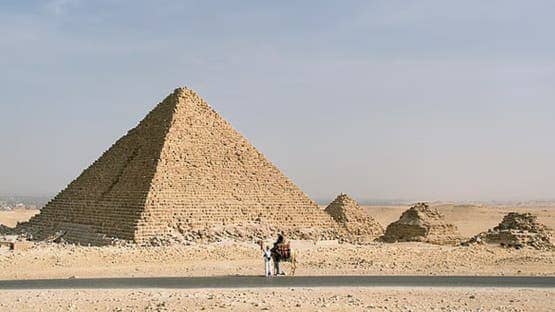Archaeologists Uncover Potential Hidden Entrance in Menkaure Pyramid at Giza

Recent archaeological surveys have identified voids and anomalies in the eastern facade of the Menkaure Pyramid, the smallest of the Great Pyramids of Giza, indicating a possible undiscovered entrance.
A collaborative research team from Egypt and Germany conducted a thorough examination of the pyramid, constructed around 2510 BC, employing non-invasive scanning methods including radar, ultrasound, and electrical tomography. Their findings revealed two hidden anomalies filled with air behind granite blocks in a specific region of the eastern facade.
Professor Christian Gross, a non-destructive testing expert at the Technical University of Munich, characterized the discovery as "an important finding in Giza," stating, "The testing methodology we developed allows for precise conclusions regarding the pyramid's interior structure."
In a follow-up statement, Gross affirmed, "The hypothesis of another entrance is quite plausible, and our results bring us significantly closer to confirming it."
The area of interest, located on the eastern side facing the Nile River, measures four meters in height and six meters in width. The granite blocks in this region are noted for being "unusually smooth," suggesting the possibility of a structure or stone cover that may have existed previously.
The hypothesis of an additional entrance was first proposed by independent researcher Stijn van den Hooven in 2019, but remained theoretical until now, supported by this new evidence.
The report indicated that the arrangement and size of the discovered voids are intriguing, potentially supporting the hypothesis of a second entrance. While the main entrance is located on the pyramid's northern side, accessible to tourists, the existence of an eastern entrance could lead to the discovery of previously unknown chambers and artifacts.
The scientific team emphasized that their results are reliable due to the combination of three different scanning techniques, but they also highlighted the need for further discussion among Egyptologists regarding the interpretation of the discovered anomalies before reaching any definitive conclusions.
